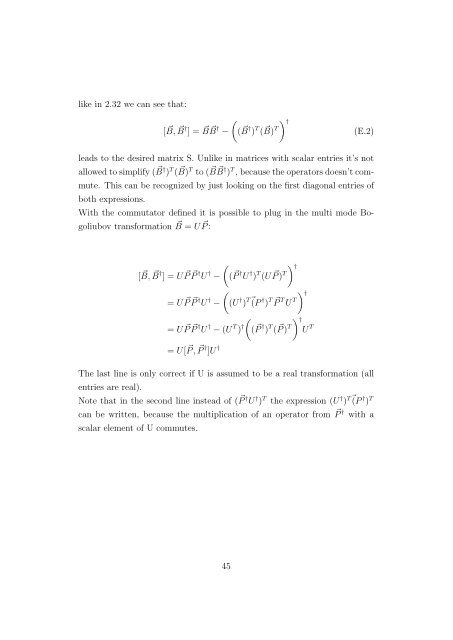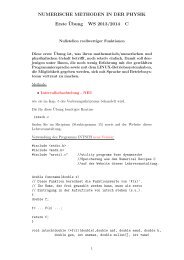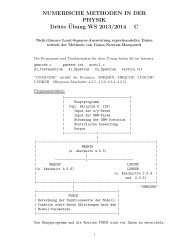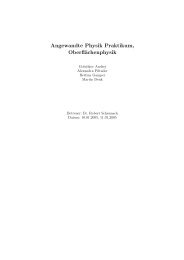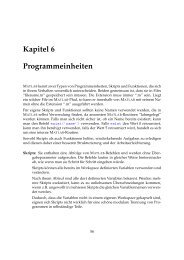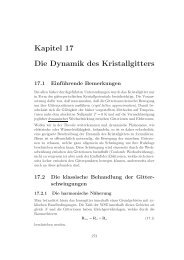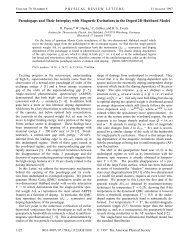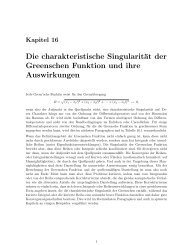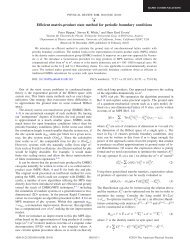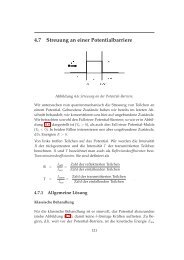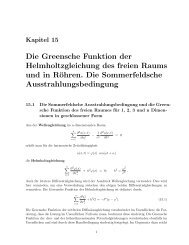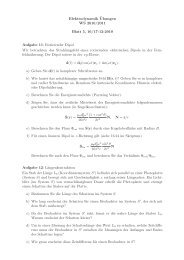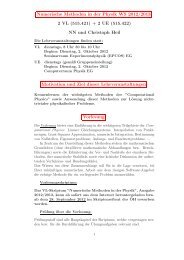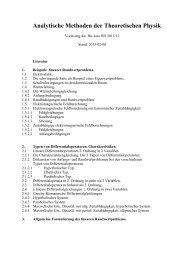Projektpraktikum - TU Graz - Institut für Theoretische Physik ...
Projektpraktikum - TU Graz - Institut für Theoretische Physik ...
Projektpraktikum - TU Graz - Institut für Theoretische Physik ...
You also want an ePaper? Increase the reach of your titles
YUMPU automatically turns print PDFs into web optimized ePapers that Google loves.
like in 2.32 we can see that:<br />
[ B, B † ] = B B † −<br />
<br />
( B † ) T ( B) T<br />
†<br />
(E.2)<br />
leads to the desired matrix S. Unlike in matrices with scalar entries it’s not<br />
allowed to simplify ( B † ) T ( B) T to ( B B † ) T , because the operators doesn’t com-<br />
mute. This can be recognized by just looking on the first diagonal entries of<br />
both expressions.<br />
With the commutator defined it is possible to plug in the multi mode Bo-<br />
goliubov transformation B = U P :<br />
[ B, B † ] = U P P † U † −<br />
= U P P † U † −<br />
<br />
( P † U † ) T (U P ) T<br />
†<br />
<br />
(U † ) T<br />
†<br />
† T<br />
(P ) P T T<br />
U<br />
= U P P † U † − (U T ) †<br />
<br />
( P † ) T ( P ) T<br />
†<br />
U T<br />
= U[ P , P † ]U †<br />
The last line is only correct if U is assumed to be a real transformation (all<br />
entries are real).<br />
Note that in the second line instead of ( P † U † ) T the expression (U † ) T (P † ) T<br />
can be written, because the multiplication of an operator from P † with a<br />
scalar element of U commutes.<br />
45


